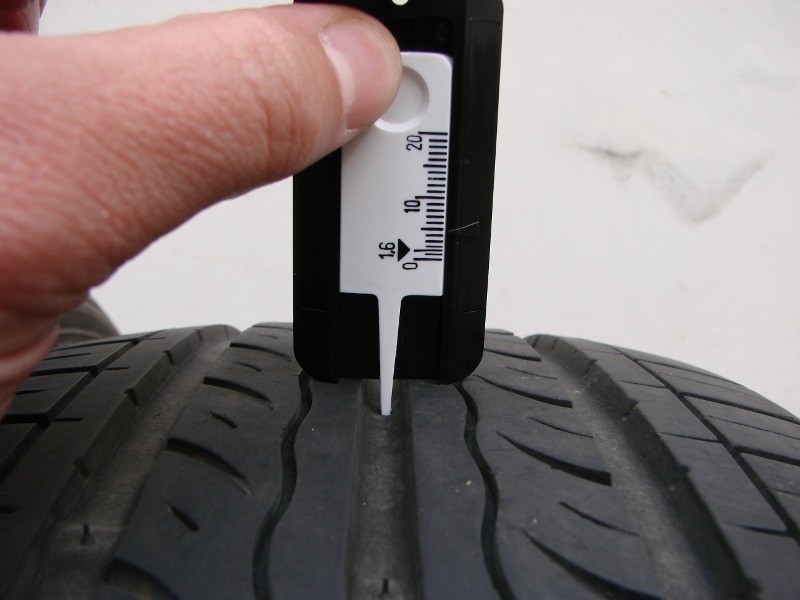
How to check tires for air leaks
Your tires are exposed to a lot of road damage to keep your ride smooth, quiet, comfortable and safe. Tire maintenance is essential in order to get as many miles on them as possible before you have to change them.
Tire pressure should be checked regularly (at least once a month) to avoid many problems that can occur due to uneven or low tire pressure. When uneven tire wear occurs, it results in uneven tread wear and can lead to rapid tire wear, forcing you to buy new ones. It also requires more frequent tire rotation and even more frequent wheel alignment.
In addition, low tire pressure can cause irreparable damage to wheels, which are expensive to replace. To make matters worse, low tire pressure is one of the main causes of flat tires, which is inconvenient at best and potentially dangerous as you could lose control of the vehicle.
While it is normal for tires to leak air (which is why you should check the pressure every month), you may notice that the pressure fluctuates more than usual. In this case, you may have a puncture or some other problem that is causing them to leak faster than usual. Luckily, there are a few home steps you can take to determine what's wrong with your tires and get them fixed before you hit the side of the road. Follow the instructions below to learn how to check for leaks in your tires.
Method 1 of 1: Check for Tire Leaks Using Household Items
Necessary materials
- Air compressor or air pump
- Chinese marker (bright color like yellow or red is best)
- socket
- Magnifying glass (optional)
- Pliers (optional)
- Soapy water with a sponge or spray bottle (optional)
- Tire iron
- Busbar plug (optional)
- Tire pressure gauge
- Tire sweep
Step 1: Check tire pressure. You will first need to check your tire pressure with a pressure gauge to get an initial tire pressure reading. The optimum tire pressure for a particular weather is usually indicated on the tires themselves, printed on a panel on the inside of the driver's side door, or in the manual. Fill tires according to these specifications.
- Functions: Be sure to pay attention to the optimum tire pressure in cold or warm weather and check it accordingly. These numbers will vary considerably and you don't want to over-inflate your tires.
Step 2: Look for Leaks. Look and listen for a leak in the suspicious tire. If you hear a high-pitched hiss, then you definitely have a leak.
You may find an object, such as a nail or a piece of wood, stuck in the tread. Look closely and closely as the color of the object may be similar to the color of a tire.
If you hear air coming out, try to feel with your hand where it's coming from.
If you find a foreign object stuck in the tire, carefully remove it with pliers and clearly mark the place with a Chinese marker so that it can be easily found again. Go directly to step 5.
Step 3: Remove the tire. Alternatively, if you don't hear or feel a leak, but are pretty sure the leak is in a particular tire, use a car jack and pry bar to remove the tire.
Thoroughly check the tire on the inside and outside of the sidewall and along the entire length of the tread, following the steps above. If necessary, do this for all tires with a suspected leak.
- Functions: Use a magnifying glass to check for cracks and other imperfections that may be too small to see with the naked eye.
Step 4: Pour soapy water on the tire. Use soapy water to find the leak.
Prepare soapy water in a bucket and apply it to the tire with a sponge, or pour it into a spray bottle and spray it on suspicious areas.
Cover about one sixth of the tire at a time and inspect the tire area carefully. If you see bubbles constantly forming on the tire, you have found a leak.
Dry the area and circle the leak with a Chinese marker.
- FunctionsA: Make sure you check the entire circumference of the tire, even after you find a leak, in case there is more than one. Always trace all leaks with a Chinese pen so that they are easy to find when repairing.
Step 5: Fix Leaks with Tire Plugs. Once you find all the leaks in your tires, and they are small punctures (less than a quarter of an inch in diameter), you can temporarily repair them with a tire plug.
If you've already removed the item stuck in the tire, use a tire reamer to make the hole smooth and even, and insert the plug, making sure it fits snugly.
Use a Chinese marker to create another circle around the puncture.
Step 6: Get the Internal Patch. As long as your tire's sidewalls and tread are in good condition, you can take your tire(s) to a service center for an internal patch replacement.
If the tires are in poor condition and the tread indicators show levels or the sidewalls are damaged, you need to purchase new quality tires which should be replaced by tire service technicians.
If you're not sure if your tires need replacing, one of our top-rated mobile mechanics can help. AvtoTachki offers a wide range of tire inspection services for cupped tires, excessive wear, tire feathering or uneven tire wear. If you don't need an inspection but know you need a tire change, we can take care of it for you. Contact us and one of our best mobile mechanics will come to your home or office.